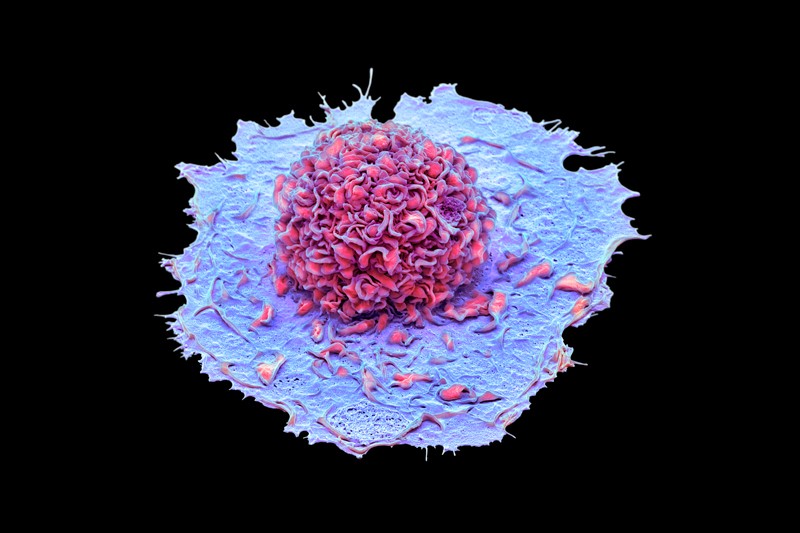Immune cells infected with SARS-CoV-2 can trigger a massive inflammatory response that contributes to severe COVID-19, suggest two papers — one published today in Nature, and a preprint posted online on 1 April.
Since the early days of the pandemic, research has suggested that inflammation leads to significant respiratory distress and other organ damage, hallmarks of severe COVID-19. But scientists have struggled to pinpoint what triggers the inflammation.
The latest studies implicate two types of white blood cells — macrophages in the lungs, and monocytes in the blood — which, once infected with the virus, trigger the inflammation. The studies also provide conclusive evidence that the virus can infect and replicate in immune cells — and reveal how it enters those cells. Evidence of such infections has been mixed until now.
The studies offer a plausible explanation for how severe COVID-19 progresses, says Malik Peiris, a virologist at the University of Hong Kong. “I don’t think it is the only or most important pathway, but it is certainly interesting.”
Still, infected immune cells could offer a potential target for drug development, says Jian Zheng, an immunologist at the University of Iowa in Iowa City.
Overactive response
In the Nature paper1, Judy Lieberman, an immunologist at the Boston Children’s Hospital in Massachusetts, and her colleagues looked at blood samples from people with COVID-19. They found that about 6% of monocytes — ‘early responder’ immune cells that patrol the body for foreign invaders — were undergoing a type of cell death associated with inflammation, known as pyroptosis. To see that many cells dying is unusual, she says, because the body typically gets rid of dead cells quickly.
When the researchers looked at the dying cells, they found they were infected with SARS-CoV-2. They suggest the virus was probably activating inflammasomes, large molecules that trigger a cascade of inflammatory responses that ended in cell death.
The researchers also looked at another type of immune cell, macrophages, in the lungs of people who had died of COVID-19. Because macrophages collect cellular garbage, including viral debris, it has been difficult to show whether macrophages were infected with SARS-CoV-2 or just sopping up this debris. The team found that about a quarter of macrophages had activated inflammasomes, and a fraction of those had indeed been infected with the virus. Other infected lung cells, epithelium, did not display the same response.
The results align with those of the second study, posted on bioRxiv2 and yet to be peer reviewed, by Esen Sefik, an immunologist at the Yale University School of Medicine, New Haven, and her colleagues. They also found that the virus could infect and replicate in macrophages in human lung cells and in a mouse model of the human immune system. The macrophages displayed the same inflammatory response described by Lieberman, and eventually died.
The team also found that giving the mice drugs that blocked inflammasomes prevented severe respiratory distress. The drugs “rescued the mice so they were not as sick”, says Sefik. This suggests that infected macrophages have a role in the pneumonia observed in people with severe COVID-19.
The macrophages’ inflammatory response could be their way of stopping SARS-CoV-2 from replicating, says study co-author Richard Flavell, an immunologist, also at Yale, and the Howard Hughes Medical Institute. When inflammasomes were activated, the virus stopped replicating in the cells. But when the researchers blocked inflammasomes, the macrophages started producing infectious virus particles.
That is a “startling” finding, says Peiris, because it shows that macrophages can assist infection.
But Stanley Perlman, a virologist also at the University of Iowa, says follow-up studies will be needed to work out how important infected immune cells are in inducing severe COVID-19 compared with other possible mechanisms.
Viral entry
Both teams were also able to show how SARS-CoV-2 can enter immune cells. Researchers have been puzzled over this because the cells don’t carry many ACE2 receptors, the virus’s main entry point.
In experiments with human and mouse cells, Sefik and Flavell found that SARS-CoV-2 could get into lung macrophages through the limited number of ACE2 receptors present. But the virus was also sneaking in through another surface protein, known as the Fcγ receptor, with the help of antibodies. When the virus encountered antibodies attached to the Fcy receptor, instead of the virus being disabled, it got scooped up into the cell.
Lieberman says this is also how the virus enters monocytes, which do not have ACE2 receptors. Only monocytes with the Fcγ receptor could be infected.
But Lieberman says that not all antibodies facilitate viral entry. The team found that antibodies produced by people who received the mRNA vaccine developed by Pfizer and BioNTech did not allow monocytes to take up the virus.
That finding is reassuring, given that many people have been vaccinated with mRNA vaccines, says Peiris. But more studies are needed to understand which types of antibodies are facilitating viral uptake by monocytes, and whether vaccines that use other technologies might induce a different response.
COVID-19 - Latest - Google News
April 06, 2022 at 04:45PM
https://ift.tt/QKNsxB1
What triggers severe COVID? Infected immune cells hold clues - Nature.com
COVID-19 - Latest - Google News
https://ift.tt/QCH6enN


No comments:
Post a Comment